Sep 9 2009
Jeannette Despres
Jeannette Despres loves the Cocagne Coast as much as we do. She settles herself in our cottage and checks the view out our front window to see how much of the water and Cocagne Island are visible between cottages. She would like a more expansive view, I can tell. She likes the open water.
She once had a house perched right above the shore, face onto the sea, just down the road from here from our cottage. On a blustery day the surf would splash the front of it. When hurricanes battered her picture window, she would tape it to keep it from imploding. Sometimes it seemed as if her house might be washed away. It scared her but she loved it anyway.
Jeannette thinks the best time of year is when the ice goes out of the bay in April. Everything is freed up and starts to move again, though the bad weather is far from over. She’s the kind of a person that loves motion, flow, progress, freedom, unfreezing of the spirit.
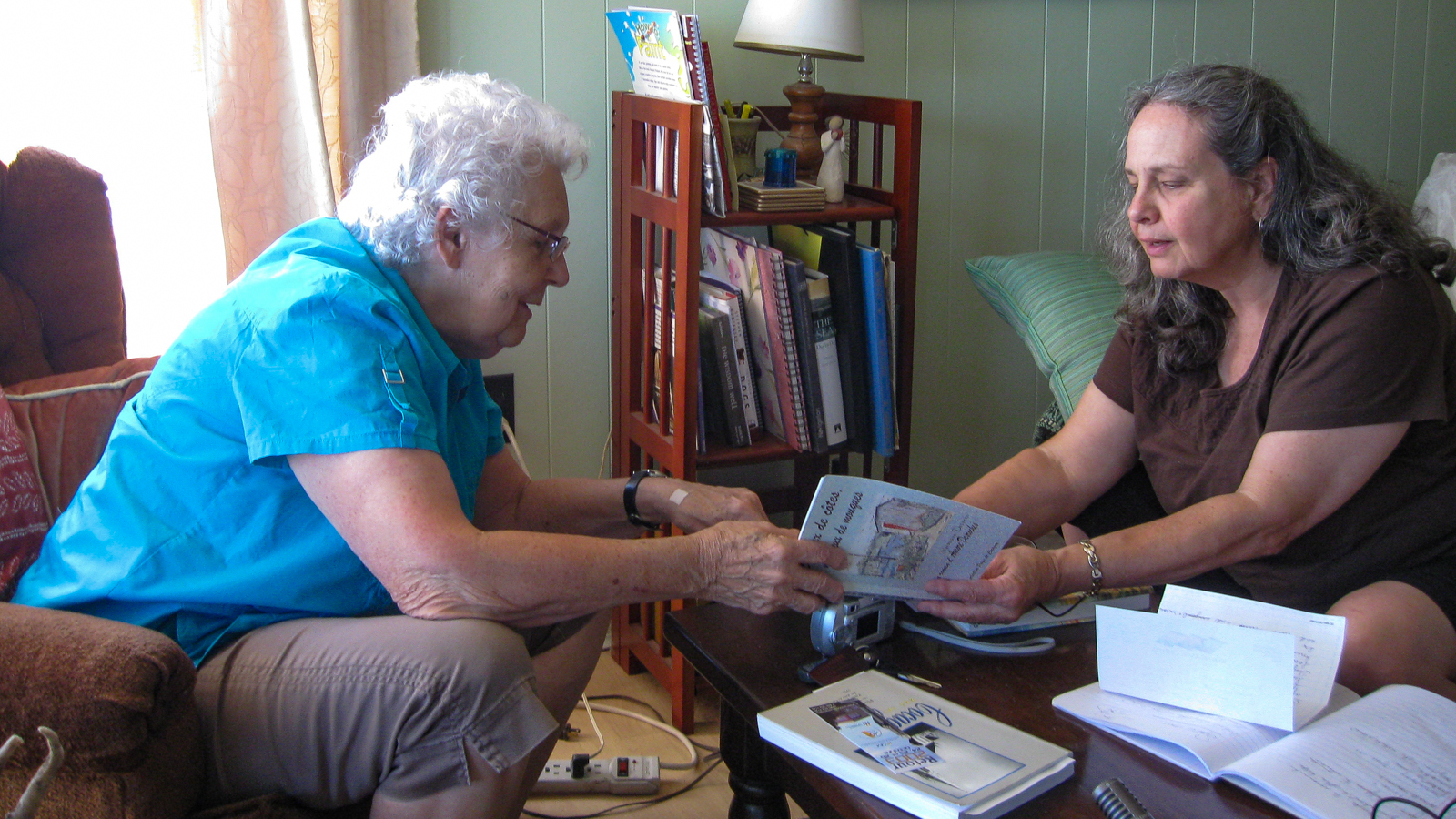
Even at 78, Jeannette was model worker
I met Jeannette when I was looking for an employee to work a few hours at the fitness centre that I managed. I had the brainwave that this would be the perfect job for a senior who needed social interaction, a little extra cash and a free membership to the gym. The supervisor at the seniors’ residence next door cooed “I have just the person for the job” when I called to ask her for possible candidates.
The next day Jeannette appeared, curly white hair bobbing, limping slightly, hips askew. She had a big smile, a smooth, strong, voice and was fluent in both English and her beautiful Acadian French. She smiled and talked at the same time, a feat I have never been able to master.
She really didn’t need the social interaction. She was involved in all kinds of things — president of the tenants’ association, cultural events at the Université de Moncton, plus she spent considerable time and energy helping relatives. She was the kind of person people sought in times of trouble, definitely a sweetie.
She didn’t need the money either. What she wanted was the adventure of a new experience, although the gym membership was attractive as well. With exercise she could work out some of her hip problems.
“I won’t feel bad if you don’t hire me”, she said, “I am old ― 78.” But my mind was made up. I didn’t care what the gym jocks thought; 78 can be fit, 78 can be healthy and beautiful and inspiring. She soon charmed everyone. We became friends and I admire her greatly.
Jeannette’s history of Cocagne
We wanted a first-hand story of how the area changed and grew and what the people were like. We invited Jeannette to tell us about the history of the area and about growing up in this small Acadian community.
Jeannette Despres was born in Cocagne, NB, in 1931, one of 10 children, in a small house on the Despres Road. “It used to be so cute”, she says of the house. Now it’s run down and shabby. She lived there before there was electricity or phones, before Treasure Island, now dense with cottages, became an island through the erosion by the sea and before there were cottages at Florina Beach, where we now sit.
I imagine Jeannette barefoot with skinny legs, banged up knees and a torn dress, a tomboy, sharp, sassy, rebellious. At five years old she chose to live with her grandparents because her mother was “hard”, as she puts it. “Hard” perhaps meaning worn down by too many children and too much work. Families were extended and more fluid in those days. Everyone had so many kids that they didn’t mind if a few were raised by other relatives.
Native people, the Mi’kmaq, also lived in the area. “We were afraid and would hide when they came around. I would tell the children to come inside. We thought they were les sorcieres — witches.” She laughs about this too, now.
A very Catholic education
All of the children were educated by the church. “They brainwashed us, but it took me awhile to realize that,” she says. She recalls how there was was a town drunk who was refused burial in the church cemetery. “We all felt sorry for him because we thought he was going to Hell.” She laughs about that now.
At the Catholic school she was top of her class, but one year she won a scholarship prize — a trip to Toronto ― because she didn’t have shoes to wear there. That was a huge disappointment.
Daily life in Cocagne
Life in Cocagne back then revolved around the sea. Fishing was the predominant livelihood and boats were the most practical mode of transportation. They even took a boat to church, just down the shore. The original church has since been torn down and replaced with a modern structure that resembles a boat. History and metaphor were not ignored by its architects. The names on the stones in the graveyard contain almost all of the original Acadian names from the handful of families from the era of the deportation, Le Grand Derangement.
Entertainment revolved around the sea as well. Jeannette told us that when the adults got tired of having all of the kids around they would say, “Here’s the key to the boat, go have some fun.” A group would take off and go out to the lobster traps, pull them up and fill their boat with the squirming crustaceans. ”Nobody minded back then, that we opened their traps. There were so many lobster that the traps would be full again by morning anyway.”
The kids would make their way to a beach, or to Cocagne Island, boil a big pot of seawater, cook the lobster, eat, play music and sing. It was simple fun. “Acadian people are very musical,” she says. Some of her childhood friends became professional musicians, but most just continued to make music for kitchen parties, the fiddle being the instrument of choice.
Her world stretched from Grand Digue up to Bouctouche, about 22 km. Each extended family group occupied fixed boundaries. She said going to visit another family like the Daigles or the Boudreaus was like going to another fiefdom or city state. Sometimes she stayed at a friend’s house for weeks, like a visiting ambassador. Or a gypsy.
Jeannette’s guided tour of Route 535
As we drive around she points out the houses that were there on Route 535 in the 30s. Few and few between they are sometimes a kilometre or more apart. After a while we can tell by the architecture which ones are the older homes. Some are still farms, some have been converted to summer cottages or remodelled year-round houses. I can see how much she enjoys this and how proud she is of her roots, and how this is bringing all of the good memories back.
I have always been intrigued by Cocagne Island. Jeannette tells us that there was once a lobster cannery there and several large buildings. One building, a grand house, maybe belonging to the factory foreman or manager, was moved off the island, over the frozen bay in winter and turned into a convent, right across from the Catholic Church. I find this fact almost too amazing to believe, but sure enough some local history books show photos of the move — a big white multi-story house with black trim being pulled across a kilometre of ice, ropes straining.
Jeannette once spent two weeks alone on that island, camping and driven crazy by the voracious mosquitos. There are no man-made structures on the island now. Luckily, locals stopped its development as a resort and golf course, citing the swarms of mosquitos as a major liability.
Jeannette grew up to become a mother of eight children, herself. I only have one child. I put all of my egg(s) in one basket, while her basket was full, I tease. “We were so poor,” she explains. But she proudly tells me of several of her children who became educated and successful professionals.
“Wood theft is still theft”
With her children grown, she moved to a small acreage where she raised her own food and maintained a woodlot. She often hired some Acadian men renowned for their strength to cut her firewood. “These men were so strong, that they could lift entire limbed trees and toss them in a pile.”
Once she discovered, to her dismay, that a lot of her wood had been cut and stolen, so she started a campaign to stop wood theft. “The RCMP couldn’t do anything, so I talked to a reporter with Radio-Canada and started the campaign. Have you heard the slogan, ‘Wood theft is still theft’? That was me that started that. Now it’s against the law.”
The reforms of P’tit Louis
“When did things start to change for the Acadians?” we ask. “With P‘tit Louis, Louis Robichaud, the first Acadian Premier of New Brunswick in the 1960s. He made better education available for Acadians, and built better roads in the area so we could drive better cars. He believed in equality. He didn’t work for just the Acadians. He worked for the English as well.”
Jeannette values education above all else, that’s clear. And improved roads allowed the Acadians to get to the centres of education, like Memramcook and, later, Moncton. Jeannette followed these roads out, too, eventually earning a nursing degree. She later taught chemistry at the Université de Moncton, an Acadian French language university built in the 1960s by the beloved and respected P‘tit Louis.
Jeannette is an elemental, as much of a coastal creature as the seagulls and hermit crabs. But she is also more than that. To me she represents the evolution of the Acadians very differently than La Sagouine, the character created by author Antonine Maillet, one of Jeannette’s contemporaries.
La Sagouine carries on with the old ways. She roams the coastal beaches in her galoshes and kerchief, digging clams, spouting folk wisdom. She is a caricature. Jeannette, on the other hand, has lived her life with the same energy as melting sea ice, striving to be free of constraints, flowing out to open water, happily carried by the tides.
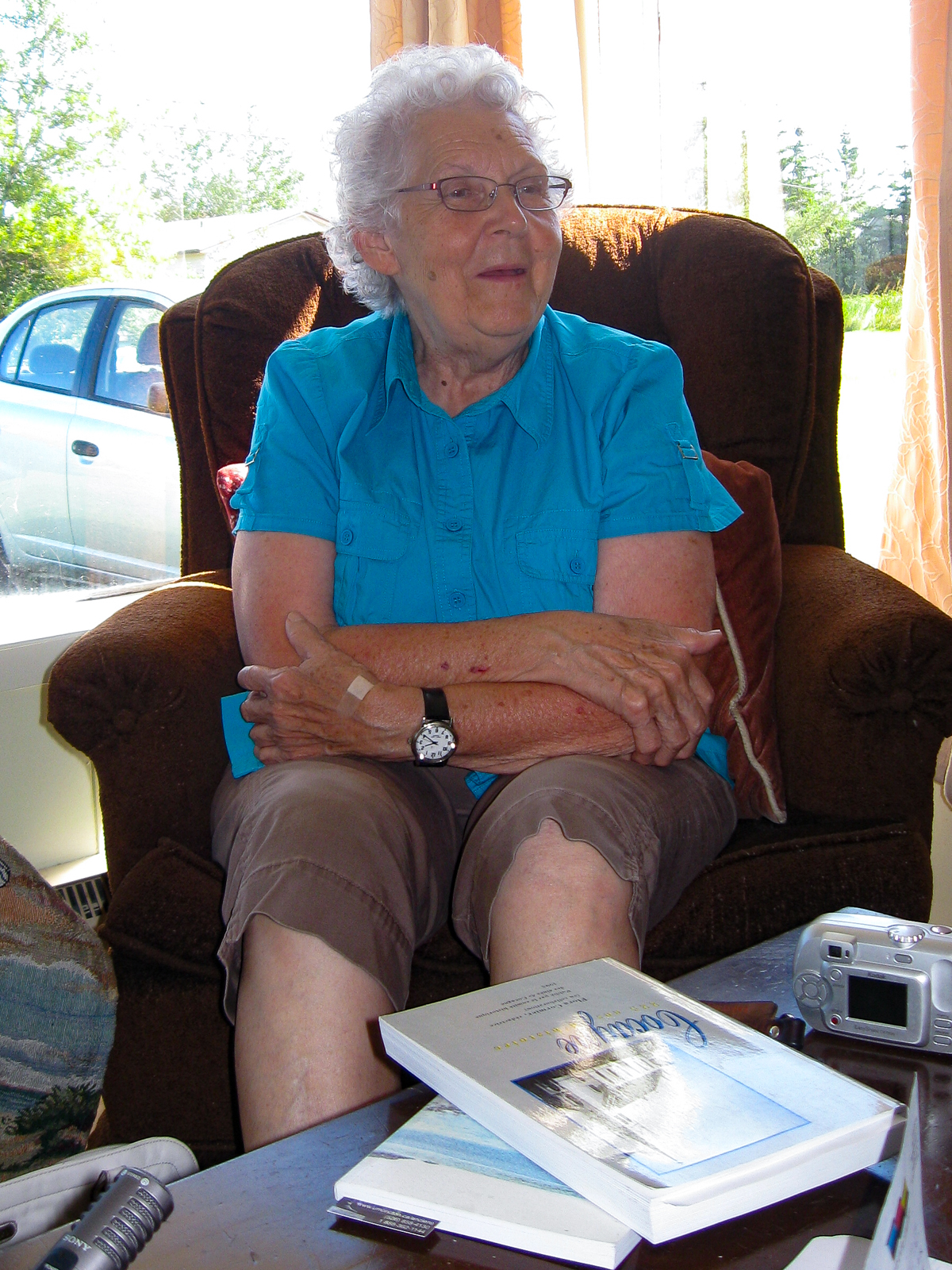
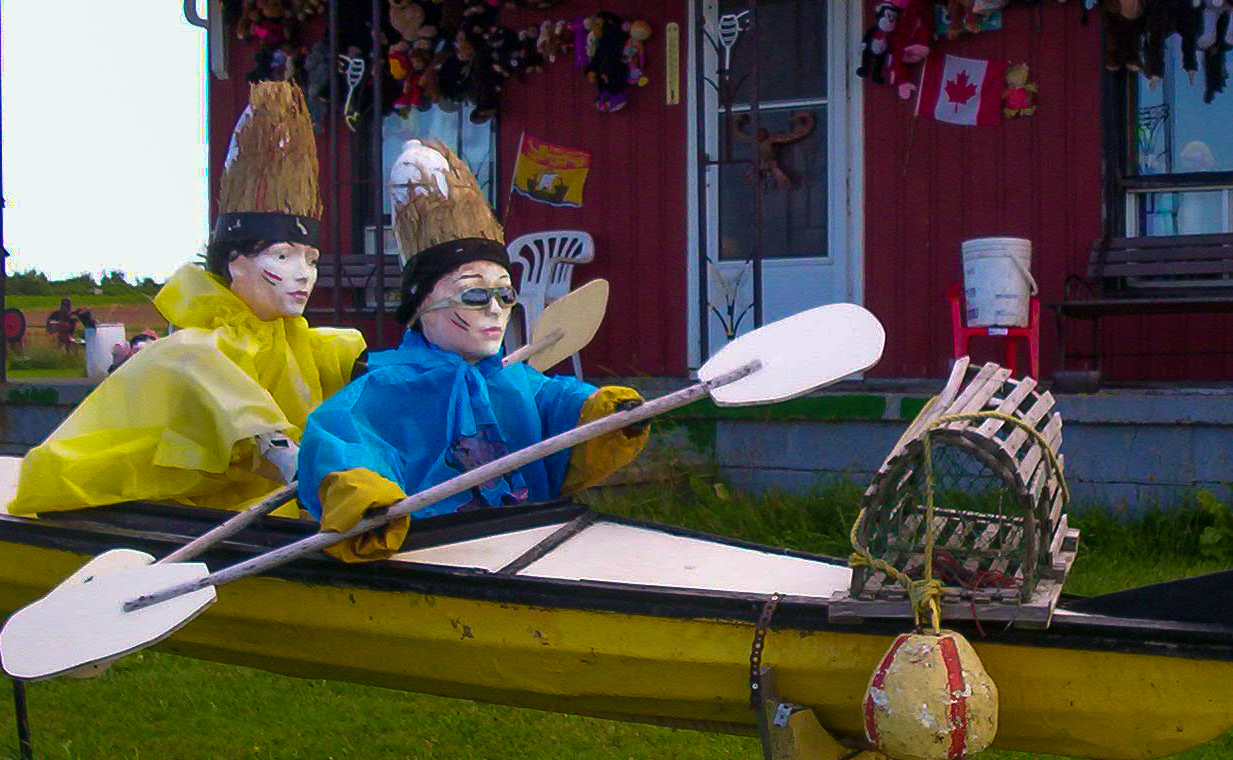
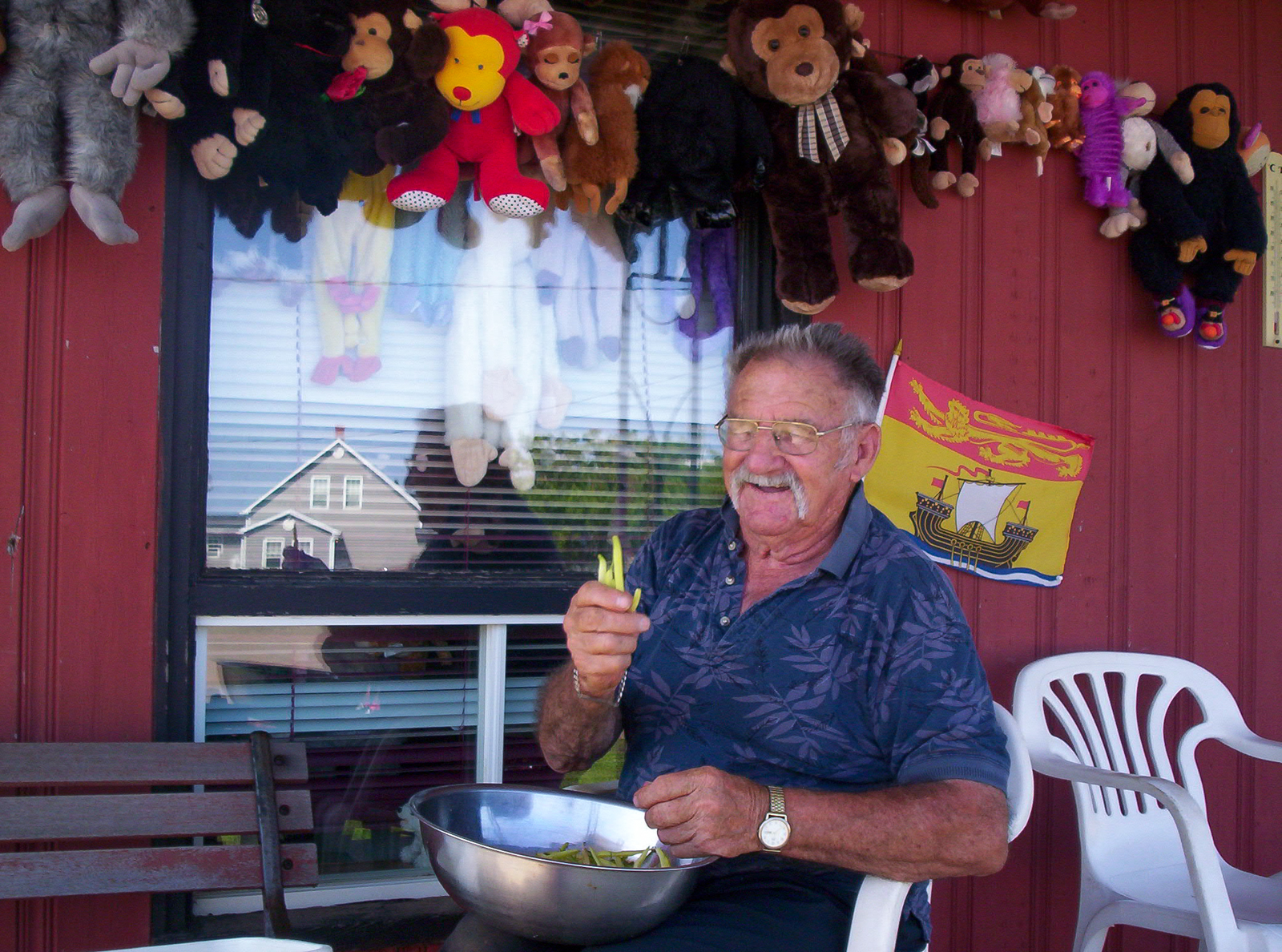
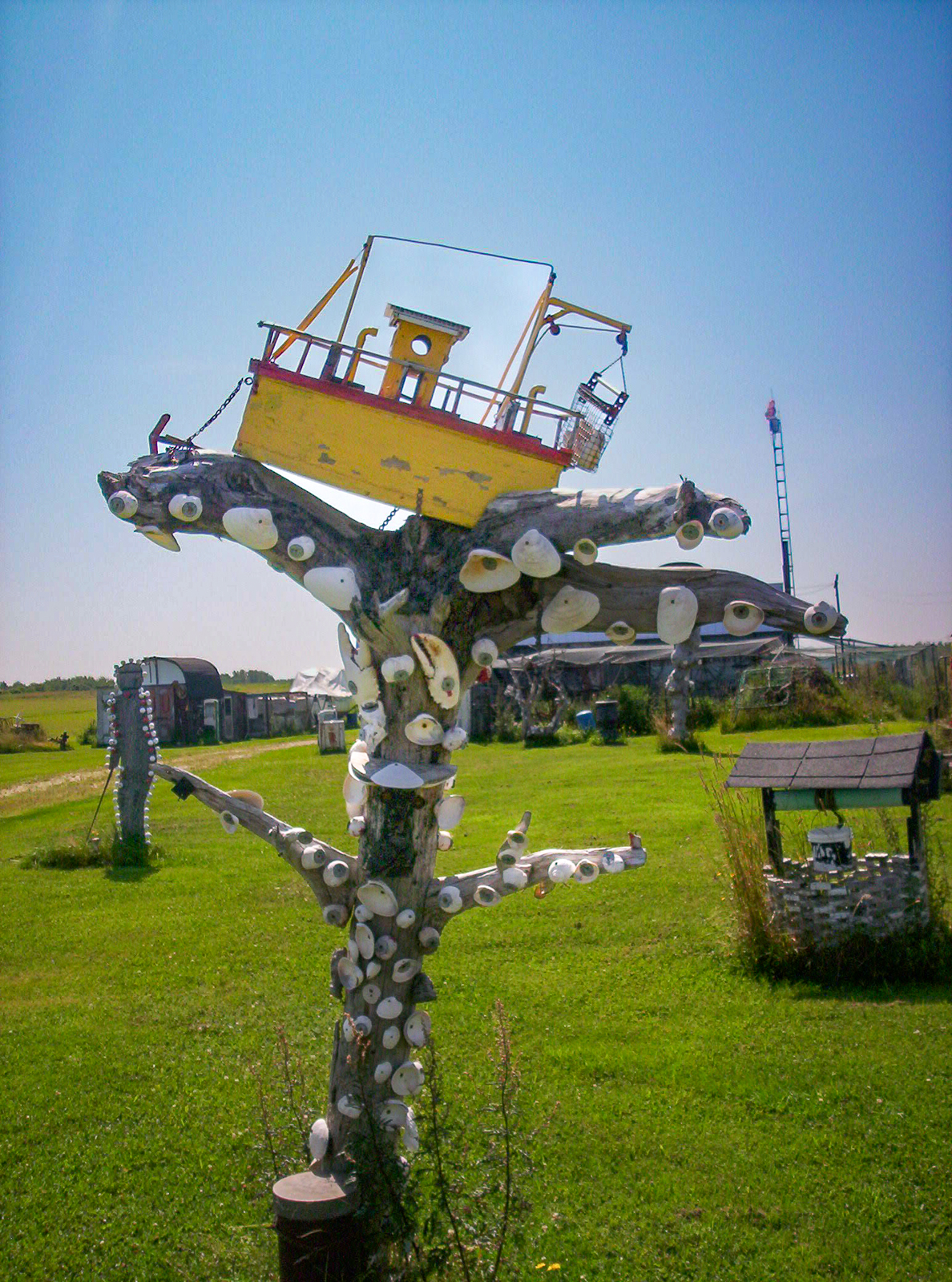

Sep 25 2009
To the lighthouse — Archie
Pilgrimage
Once a year since we’ve discovered it was there we’ve made our pilgrimage to Miscou Island, the furthest point north east you can go in New Brunswick. Now, we always know we’re going. Even when we set out to go somewhere else, we know we’re going. Miscou has that kind of pull. This year, though, it had more pull than usual.
This time we had set out to explore Val Comeau Beach near Tracadie-Sheila, which is about midway between our cottage and the island. We weren’t up for a long trip since it was the first day of an all too brief holiday and commuting to work had been taking its toll on us as was being away from each other during the week. Much of the trip would be highway driving and in my little Echo with the wind blowing loudly in the windows — no air-conditioning — we may as well be traveling separately. So Val Comeau seemed reasonable.
Magical Naviagtion
Val Comeau’s great. It’s a great beach and has a picnic spot by the beach that will be our lunch spot from now on when we go to Miscou. But halfway through the meal I knew we were going to Miscou. I’m sure Elaine did, too. “How far is it to Miscou?” I asked her while we were checking Tracadie later. “Not far,” she answered. Elaine’s the navigator. So we were on our way; as if we ever doubted it; as if we even had a choice. I don’t even remember asking if we were going.
What pulls us there? The beaches at Cap Lumière, another remote spot, are better. It’s not the restaurants. Miscou Lighthouse has only an ice cream stand which wasn’t there two years ago and last year didn’t have any ice cream. Locals have started to put some effort into making it more of a tourist destination, but we were going there when there was only the lighthouse. What drew us?
Elaine says you have to want to go to Miscou and she’s right because. It’s not enroute to anywhere you’re likely to be heading. But once you’re there…
Reaching Miscou Lighthouse is like reaching somewhere sacred. Stark, blown clean by the wind, most everything behind the beach is bog. It’s the edge of the province and when I step past the lighthouse it’s like walking through a membrane out of my world and into some other state of mind.
Most days the surf is serious ocean surf, the wind almost relentless, the beach goes on too far for us to reach the end. On a clear day across the Baie-des-Chaleurs you can see the Gaspé Peninsula, another province, a whole other world. When you look east you’re looking into the Gulf of St. Lawrence. And always the wind blows. It’s an edge of the world.
It’s a place where you can breathe, where you’re conscious of breathing and how enjoyable it can be. The rhythm of the surf washes things away the way I thought confession was supposed to. When I emerge and am walking across the parking lot back to our car my perspective has always changed for the real, I see things clearer. I see myself clearer. I see Elaine clearer and she is more dear to me which tells me how things have to change in our lives, that we can’t go on working in two different cities. I guess those kinds of realizations are what you’d expect to get from a sacred place.
But what is the draw of Miscou? So it’s an edge of the world. There are many such edges, the earth being round and all. They stick out into the ocean and many have limited real estate appeal. We had thought of buying a cottage there until we visited in September. I was in nearby Lameque in March one year and it was like far-north tundra. But in July it is the temperature we’re happiest and most carefree but July is nice everywhere around here. Why go to Miscou?
There might be history there, but I don’t know any of it. I know something of Wilson’s Point on the other side of the island where about 13 families live. A Scotsman was the first European to settle there and it might be interesting but when we were there we thought only of getting to the lighthouse. “All right, that’s enough,”Elaine said after 15 minutes. Wilson’s Point was her idea.
It could be the lighthouse, which is kind of odd when you think that a lighthouse’s value is in warning you to stay away. It’s a wonderful structure, though, a true lighthouse and on past visits I’ve wished we could live nearby. Living in the lighthouse has never been a fantasy, but there is at least one cottage nearby that would be a great retreat and was even for sale once but we passed because not only had we visited in September, we didn’t have enough money to spend on a cottage we could visit once, maybe, twice a year unless we’re more independently employed.
In fact, I don’t think I would want to live there at all. It’s important not to. It could be a retreat, the kind where you have to go someplace like Shippagan for “supplies” periodically, but living there would be an ordeal, especially once the snow began to fly and I’ve had enough of that kind of living and don’t get me started.
Even worse, though, living there would likely destroy what it is to us: a pilgrimage. Its value to us is in getting there, breathing for a while, feeling the waves, looking at the distant vista that is Gaspé and the Gulf and leaving. Leaving is as important as getting there.
Enlightenment, no matter how profound, is diddling if you don’t bring it back to the real world and use it. The enlightenment I got this year? That more than anything there is a person I would like to drive around with, write with, work with and explore with. I’ve had this insight before but it’s taken a year of long separations for it to actually make sense enough to want to make it real.
By Archie • First Page, Miscou, New Brunswick